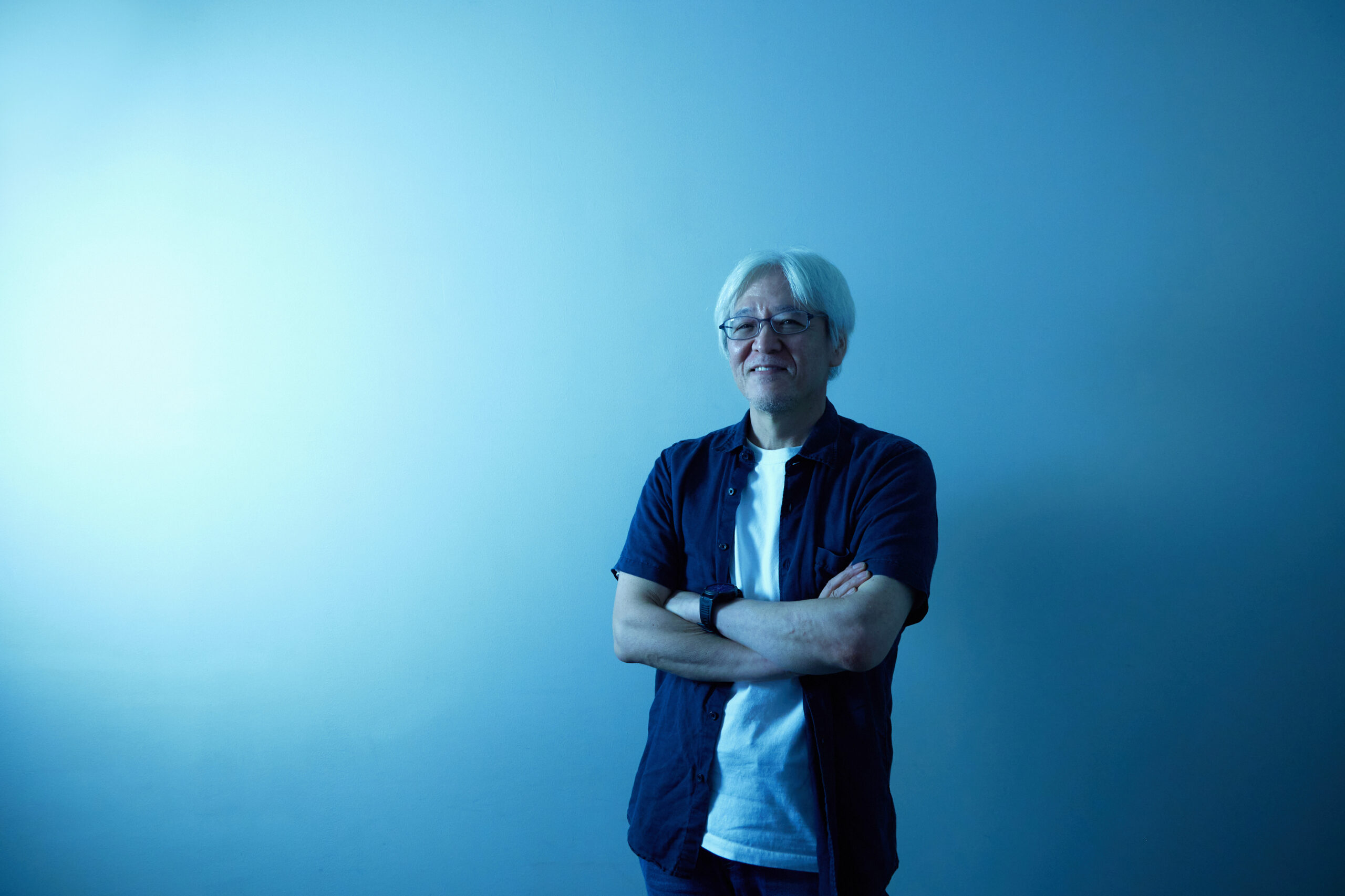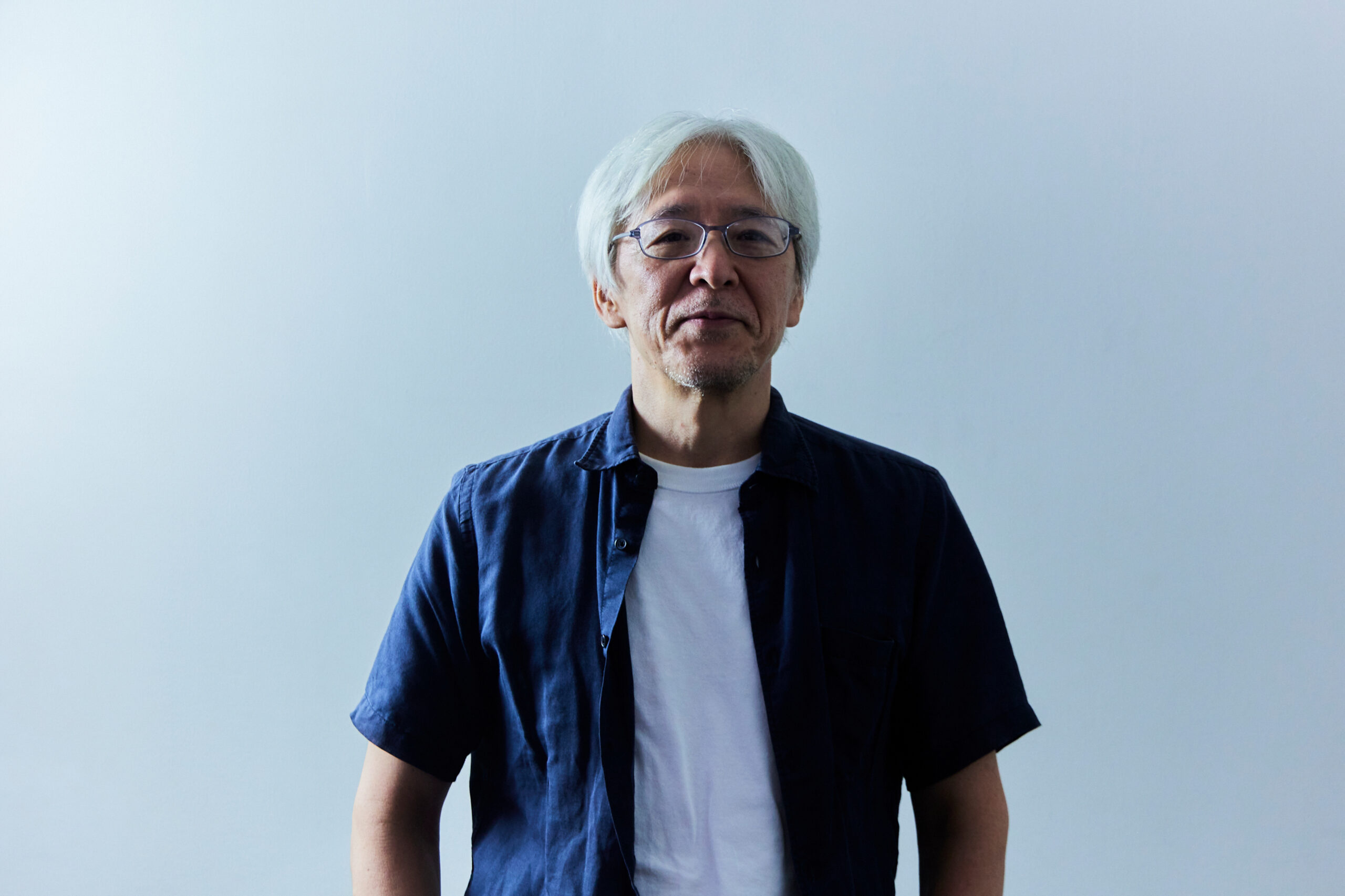
Kazuchika Kise’s Pride as the Creator of The Fourth “Ghost in the Shell”: His Focus as an Animator and Director #03
Text: Satoshi Asahara / Photo: Great The KabukichoA fully artificial cyborg body, not a humanoid robot. Kazuchika Kise is the artist who brought that “living” quality to the mysterious being known as Motoko Kusanagi with his high-quality animation. In his role as animation director for both Ghost in the Shell and its sequel, Innocence, Kise played a vital role in the pursuit of realism emphasized by director Mamoru Oshii. He made the bold move to revisit Motoko’s youth when directing Ghost in the Shell: Arise, finding new ways to showcase the series’ charms.
For all that he is one of the creators most familiar with Motoko as a character, he casually tells us that “I prefer drawing old guys.” And even with the manual dexterity that rivals a magician, he gives off an air of inability to lie in our interview. And so, we took the opportunity to dig into a thorough look at everything from the struggles of animators and directors to his outlook on modern animation.
#03 Aiming for an Anime You Can Follow With Just Silent Placeholder Video
-Could you tell us about the course you followed, going from animation director on Ghost in the Shell (1995) and Innocence (2004) to director on Ghost in the Shell: Arise (2013-2014)?
Kazuchika Kise (“Kise”): To be blunt, the company’s president (Mitsuhisa Ishikawa) tricked me. We were out drinking, and he said he had a new job for me, and he’d tell me about it if I said I’d do it. So I gave in to curiosity and agreed. And then I regretted it when I heard the title… I hadn’t even imagined we’d be doing Ghost in the Shell again. We had already shown the world without Motoko in Innocence, so I kind of felt like the story was over.
-It sounds like it seemed like an absurd request at the time. Was the premise for the Arise series set from the start, as a prequel to Motoko and Public Security Section 9?
Kise: Yes. I think they met with Shirow beforehand and came up with a plot for these episodes leading up to Motoko’s formation of Section 9. I remember feeling a bit better after learning that I’d get to draw a different Motoko than usual. And I would be the main director, and Ishikawa said I just needed to say if things were good or not. And I said, “Well, if that’s the deal, I’ll do it.” But that sounded like too little to do, so I also ended up in charge of the character designs.

-I thought the switch to short bangs for Motoko’s hair was intended to make it visually clear that this was the start of a new series. Was that a tough decision to make, even knowing the setting extremely well?
Kise: We wanted to de-age her appearance, but it was hard to get the exact degree correct. Too big of a change to the existing base character makes her not Motoko anymore. It felt like I’d never find a solution, then I saw a girl with short bangs on the train one day and thought that those might work. Back then, we were in the early days of the short bangs era in Japan, thanks to celebrities like Aoi Miyazaki and Yu Aoi.
-I’m sure a lot of the production team loved Ghost in the Shell. Was anyone opposed to the bold shifts in character design?
Kise: Just as you probably imagine, it was hard to get consensus on a lot of points. But everyone was surprisingly quick to accept Motoko’s bangs. Shirow didn’t take issue with them, either. We also gave Chief Aramaki black hair in it, but nobody paid any attention to the old man’s looks. *laughs*
-Was there a lot of argument for and against the voice talent recasting when the series was announced?
Kise: The fans were brutal toward us for that. I felt like the original cast’s voices were too calm to work. I knew we’d get criticism, but I wanted the new voice actors to grow into the roles, and so we made the announcement when we started recording audio for “Border 1: Ghost Pain.” I told them that I took full responsibility and not to worry. Just do your best in the role, I said. In the end, everyone portrayed youthfulness while maintaining the integrity of the characters, which I found surprisingly seamless.
-There are four total parts to Arise, and you both directed and worked as animation directors on “Border 3: Ghost Tears.” That’s probably the only episode in any of the anime works to depict Motoko in a fully romantic way.
Kise: Even the original manga only shows fragmentary glances at Motoko’s romantic side, and Kamiyama rarely touched on it when making Ghost in the Shell: Stand Alone Complex, and I wanted to get to it just because no one else had. Our screenwriter, Ubukata, struggled with it precisely because there was so little precedent to go on. *laughs* I was mostly careful to stay away from anything explicit. The goal was a respectful take on how romantic relationships and distance work for Motoko, rather than cheap sexual content.
-Could you tell us about any scenes you feel particularly strongly about?
Kise: Maybe the scene at the start of “Border 3: Ghost Tears” where Motoko uses Batou’s ghost key to control him and make him punch her in the face (as punishment for showing disrespect). You don’t really get similar scenes around jokes like that in the other anime series, although they’re fairly common in the manga. I wanted to get across the comedy Shirow uses with my chance at directing.

-You’ve made several hits since the first episode of Ghost in the Shell: Arise premiered in theaters. Are there any current trends you have an eye on?
Kise: I think there are too many stories already asking, “Do we all really hate the modern world so much?” I find it strange that all that gets made is isekai stories. There was even a series about being reborn as a vending machine recently. That one really stunned me. I feel like there are fewer grounded anime works than there used to be.
-I feel like Ghost in the Shell was a wild, out-there story when it was first made into an anime. What do you think of as a grounded story?
Kise: The cyberbrains and cyborg bodies in Ghost in the Shell are fantasy elements, but that aside, conditions for them are the same as for normal humans. There’s no magic, and there are no monsters. There’s no concept of leveling up. Recent anime works will show things like a level-up gauge that appears when characters tap the air, even though there’s no in-setting reason for them to have a personal interface like that. I may just be getting old, but it really makes me wonder: “What is going on here?” It just doesn’t work for me.
-Even when you’re depicting a fantasy of another world, it feels off when what it’s expressing is so removed from reality. It seems like there’s more anime made with 3D CG than there were a decade ago. Does the quality ever impress you?
Kise: I certainly don’t hate CG anime, but it’s not really my taste, either. Personally, I like stop-motion videos using things like action figures. You’ll find it on Twitter fairly frequently, and it’s really impressive. In contrast, the action is too fast in recent anime, and I can’t follow what’s happening. Attacks lack weight. It doesn’t feel realistic. Since no one dies from being hit in the first place, it also doesn’t look painful. I feel like the intent behind the art is just more extravagant action than depicting a fight with opponents testing one another.
-Motoko gets into a hand-to-hand fight in “Border 1: Ghost Pain” at the start of Ghost in the Shell: Arise. We see her take damage to her wrist in the fight, and her arm gets twisted off at the elbow. It looks painful even for a fight between two nearly all-machine cyborgs, and it’s raw in a way that can make people want to avert their eyes.
Kise: My goal with animation is always to create art that will stimulate all the senses, even without audio, in an early, rushed version. My ideal is art where you can hear the characters breathe and the punches land even without lines or sound effects, and where you can smell the smells and feel the pain. But I don’t feel like I’m at that level yet. I still find fault with my old work when I look back over it now, so I try not to watch it.
-How do you hope to see Ghost in the Shell anime works evolve in the future?
Kise: Personally, I’d like to see an entirely AI-made Ghost in the Shell someday, without human involvement, if Shirow would let it happen. What would it end up as if you used AI for the script, the character designs, the editing, and everything else? I’d be very curious about that, and I feel like Ghost in the Shell is well suited to that kind of experiment as a series.
(END)
KAZUCHIKA KISE
Born March 6, 1965. A native of Osaka Prefecture. Joined Anime R after graduating high school. After serving as animation directior on productions including Zillion, he changed jobs to work with Production I.G on Patlabor: the Movie. In addition to working on mega-hit films including Rebuild of Evangelion and Your Name as an animation director, he has also taken on recent roles in television anime series including The Fire Hunter and Heavenly Delusion. Currently a director of Production I.G, Inc.

